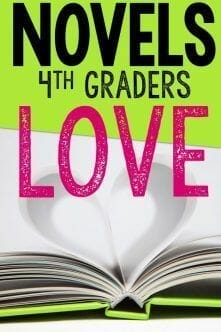25 Awesome SEL Read Alouds for Elementary Learners
Social-Emotional Learning, also called SEL, is finally being recognized for the important role it plays in student success. Today I wanted to share 20 amazing SEL read alouds that will resonate with your elementary students. I’ve included both picture books and chapter books so you’ll find plenty of options to meet the needs of your classroom.
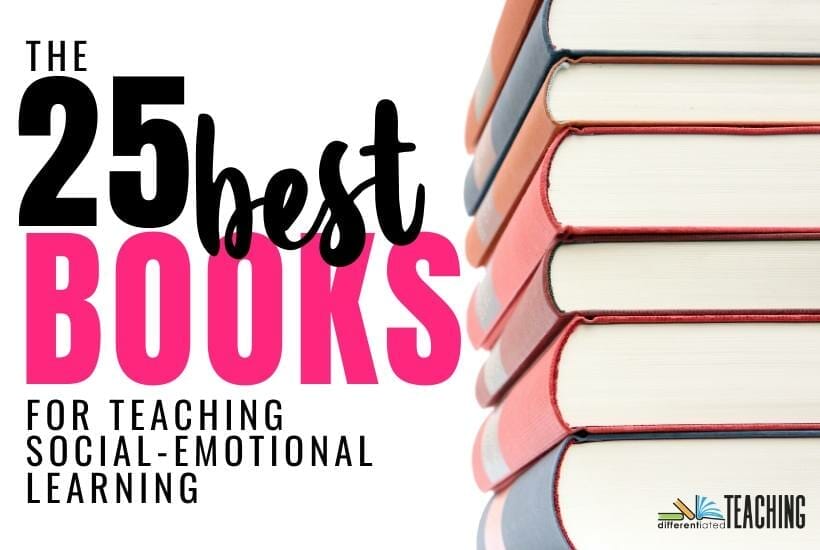
The Best Picture & Chapter Books for the SEL Classroom
1. The Invisible Boy by Patrice Barton
Brian is the invisible boy. Invisible because nobody notices him or includes him in their games or activities. One day Justin, a new boy, comes to school and teams up with Brian on a project. This interaction changes Brian’s life and shows everyone how much he has to offer.
A great book to share that will especially speak to the introverts in the group.

2. Enemy Pie by Derek Munson
Why, oh why, did Jeremy Ross have to move to the neighborhood and ruin everything? A perfect summer, now headed straight for the dumpster. Fortunately, dad has a plan for getting rid of enemies – his secret recipe for Enemy Pie. The strange thing is that part of the recipe includes spending an entire day with the enemy! This endearing story of turning and enemy into a friend will amuse and intrigue while teaching a lesson of inclusion.
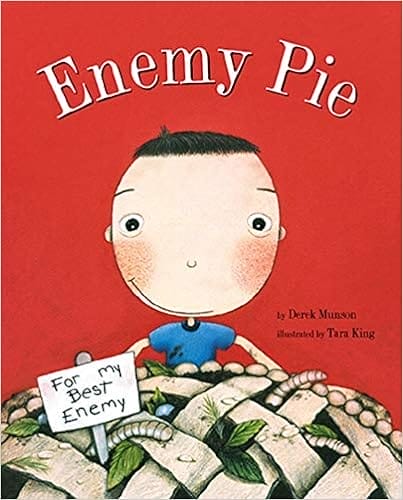
3. The Memory String by Eve Bunting
Laura sits with memories of her mother while trying somehow to tolerate her new stepmother. Each button on the memory string represents a piece of her family history, and when the string breaks, her heart breaks with it. When her new stepmother genuinely tries to help, Laura’s opinion of her changes. Bunting’s moving story of grief through the eyes of a child will resonate with readers of all ages.

4. Don’t Think About Purple Elephants by Susanne Merritt
Our students worry. Some fret just a little, while others are fraught with heart-pounding anxiety, even in elementary school. Sophie, the main character, is one such student. Her mom comes up with a strategy to help Sophie calm herself. Children everywhere will appreciate the humorous, elephant-infused way Sophie and her mom tackle her anxiety.

5. Fish in a Tree by Lynda Mullaly Hunt
Approximately 5-10% of students are dyslexic. That means there’s very likely a student with dyslexia in your class – even if they haven’t been identified. This book is a must-read for those students & their peers.
There are many ways to distract a teacher. Ally knows this, and she uses every trick in the book to keep a teacher from realizing she cannot read. In Mr. Daniels, however, she has met her match. He is determined to figure out the real Ally. In the process, Ally finds that she is actually very intelligent, and her dyslexia doesn’t have to define her.

The complex characters and rich plotline make this chapter book a must-read. It will speak both to those students who struggle academically and those who might not be their kindest all the time.
6. My Mouth is a Volcano! by Julia Cook
Louis has a bad habit – interrupting! This story shows the struggle going on in Louis’ body. His words are fighting to escape his brain, jump onto his tongue, and burst right out his mouth. Louis realizes what a problem it is when others begin interrupting HIM.
This book is great for talking about taking turns and giving everyone a chance to share their thoughts.

7. The Name Jar by Yangsook Choi
Unhei is new to the school. Rather than telling people how to say her name, she asks her classmates to make a name for her. After trying out each name, she recognizes that her name has an importance that she shouldn’t have to surrender.
The multicultural aspect of this book makes it even more relevant to many audiences. Everyone’s name is important, after all.

8. After the Fall by Dan Santat
What fun when traditional storybook characters become multi-dimensional!
In this lovely story, we catch up with Humpty Dumpty after his famous mishap. What happens next? Well, getting up from a fall, whether literal or metaphorical, can be tricky. Humpty recovers outwardly but still has trauma on the inside.
A great book for addressing emotional resiliency.

9. Emmahttps://amzn.to/3apwwnPnuel’s Dream: The True Story of Emmanuel Ofosu Yeboah by Laurie Ann Thompson
This true story (which was also made into a film narrated by Oprah Winfrey) tells the story of Emmanuel, who was born in Ghana, West Africa. Dismissed by most people because of his deformed leg, he is encouraged to pursue his dreams by his mother. As a result of her love and encouragement, he hops more than two miles each way to school, learns to play soccer, and eventually becomes a cyclist. Emmanuel’s powerful message is this: disability is not inability.
An inspirational story for every child about overcoming obstacles.

10. We’re All Wonders by RJ Palacio
This picture book follows Auggie and his dog Daisy on an original adventure. Wonder has been a national bestseller since its debut. Now the message is being communicated via picture book for younger readers.
Every child’s hope to belong is recognized in this book, which is the perfect vehicle for discussing empathy and kindness with young children.

11. What Were You Thinking? A Story About Learning to Control Your Impulses by Bryan Smith
Part of the Executive FUNction Series written by a school counselor, this book focuses on impulse control, developing friendships, and controlling emotions. Third-grader Braden enjoys being the center of attention and fancies himself quite the comedian. When a bad decision and impulsive reaction leave a classmate very hurt one day, the adults in Braden’s life come together to help him manage his impulses.

12. My Day Is Ruined!: A Story Teaching Flexible Thinking by Bryan Smith
Another great book by Bryan Smith, this story focuses on another important skill that many students struggle with – flexible thinking.
When an unexpected rain-out ruins his plans for the upcoming Championship baseball game, Braden cannot recover. His attitude and his day are destroyed. In this story about managing stress and handling emotions, children will find practical advice and guidance when unexpected events come along.

13. Your Fantastic and Elastic Brain by JoAnn Deak, PhD
Having a growth mindset rather than a fixed one makes learning easier. This book shows children that making mistakes, trying something new, and practicing difficult skills are excellent ways to help the brain to learn. Engaging illustrations and diagrams help the reader to understand the inner workings of the brain.

14. A Quiet Place by Douglas Wood
This book is a great story to use when introducing your classroom cool-down spot or calming strategies.
Considering that most of us are inundated with media and technology, many children never have the opportunity to be alone with their thoughts.
Andreasen extolls the virtues of solitude and peace through this simple, beautifully-illustrated book. Whether it’s the shore, the snow, or simply within yourself, we all need a quiet place.

15. The Unbudgeable Curmudgeon by Matthew Burgess
Everyone has bad days, but many students don’t know how to get out of their funk once something doesn’t go quite right.
How does one contend with a curmudgeon? This delightful picture book is filled with fun phrasing and engaging illustrations. It’s the perfect read-aloud when someone is having a cranky day!
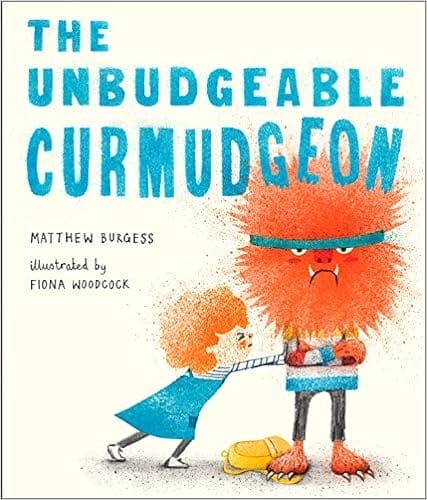
16. The Way I Feel by Janan Cain
The message here is that no feeling lasts forever and things are always changing. This book gives names to feelings and invites the reader to talk about what makes him or her feel that way.
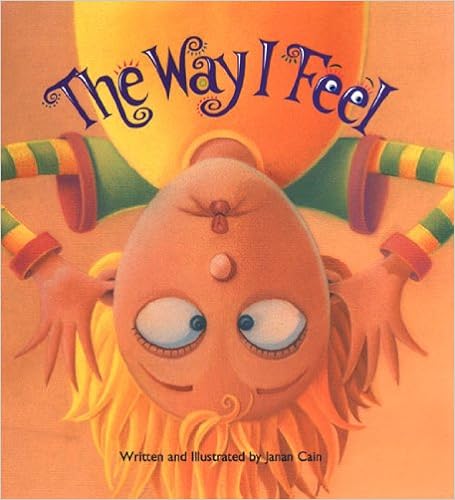
17. Grow Happy by Jon Lasser, PhD
Just like growing a garden, one can also cultivate happiness. The main character, Kiko, shows us how this book is grounded in positive psychology. For growing happiness, the tools include social support, good choices, and problem-solving skills.
The reader comes to understand that she has all the tools necessary to nurture her happiness.

18. Leaving Lymon by Lesa Cline-Ransome
In this picture book, the main character, Lymon, is being raised by his loving grandparents. He doesn’t remember much about his mother, and his father is incarcerated. He and his grandfather spend their summer nights playing the guitar together.
So many students will identify with the ambivalent feelings of Lymon, who loves his grandparents but definitely has questions about his situation.

19. Chrysanthemum by Kevin Henkes
Henkes is a prolific author whose writing speaks to children for a variety of reasons.
In this book, the main character, Chrysanthemum, adores her name. Why wouldn’t she? Her parents chose the name especially for her. When she finally gets to go to school, though, the experience isn’t all that she’d hoped for. Her peers are teasing her because of her beautiful and unique name. How will she handle this unexpected problem?
Great for the beginning of the year and building classroom community.

20. Diary of an Awesome Friendly Kid by Jeff Kinney
This spin-off of the Wimpy Kid series focuses on Rowley Jefferson, Greg’s best friend.
Rowley puts up with a lot from his so-called friend Greg, including lying and other bad behavior. Kinney’s writing is very entertaining for children and is also a nice opportunity to have conversations about what it truly means to be a good friend.

21. Out of My Mind by Sharon Draper
The story of a girl with cerebral palsy gives an inside look into what many students might miss about their peers with disabilities. Melody has a lot going on in her mind, but she can’t control her body to communicate those thoughts and feelings. The reality is all she wants is to be accepted by her peers and included in their activities.
Narrated by Melody, the story gives an inside view into how she sees the world around her and what others are missing when they can’t look past her wheelchair.

22. Millie Fierce by Jane Manning
This is a great book for students who might not stand up for themselves. The story of a wallflower named Millie who decides to get “fierce” is perfect for talking about so many great SEL topics.
Millie learns that fierce and mean aren’t the same, and while everyone needs a little bit of fierceness to stand up for themselves, it’s important not to take it too far.

23. No Fits, Nilson! by Zachariah O’Hora
Another great book about being flexible and how to respond when things don’t go your way, No Fits, Nilson! is the story of a girl and her gorilla.
When things don’t go quite right, Nilson’s temper takes over and he throws a HUGE fit. While this book might not be needed for all students, it is a great opportunity to talk about big vs. small problems with those students who need it.

24. What Should Danny Do? School Day by Adir Levy
Remember the old Choose Your Own Adventure series? This book applies that format to help students see how their choices impact outcomes.
Throughout his school day, Danny is faced with several decisions on how he’ll react to certain situations.
This book has eight different endings, depending on the choices your students make as you read. Perfect for lessons on making positive choices.

25. Mustaches for Maddie by Chad Morris & Shelly Brown
While this chapter book is better suited for upper elementary students, I wanted to include it because it focuses on resilience and kindness in the face of challenges.
Maddie is a unique 12-year-old who loves to make people laugh with her fake mustaches. However, Maddie’s life is turned upside-down by an unexpected medical issue on top of having to deal with the class mean girl. Will Maddie be able to tackle both?
This book is based on a true story about the author’s daughter.

Looking for more great books for your classroom?
Finding novels and chapter books for your classroom can be challenging, especially with the limited time and budget most teachers are dealing with. Be sure to check out these articles to find even great books for your students.



